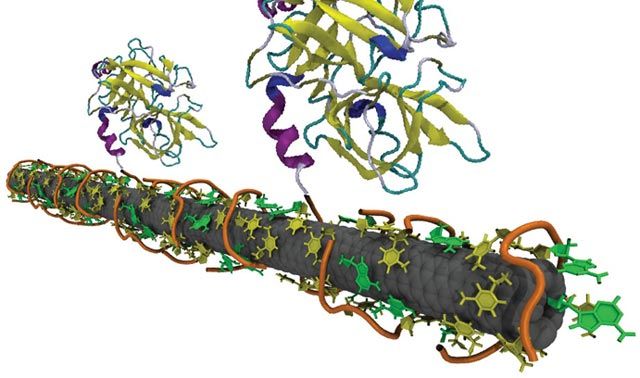Carbon nanotubes (CNTs) are used in a variety of applications, from clothing and sporting equipment to photovoltaic cells, electronic devices and even automobile tires.
Dan Roxbury ’07, ’12 Ph.D. (chemical engineering) hopes CNTs can one day be inserted in the human body to serve as an early warning system to detect and treat cancer.
Roxbury recently received a grant from the American Cancer Society to support his work at the Sloan Kettering Institute in New York. According to ACS, Roxbury is building a sensor made of CNTs wrapped with strands of DNA that can detect in the bloodstream the amount of a biomarker called urokinase plasminogen activator (uPA) that signals the presence and progression of some types of cancer.
The sensing agent in Roxbury’s sensor is the uPA binding antibody, which is attached to the CNT-DNA hybrid wrap and detects the uPA. The DNA he uses is synthetic. The width of each strand is roughly the same as the diameter of the nanotubes, while their length is shorter than that of the CNTs. Several strands wrap around an individual CNT. After modifying the end of each DNA strand as well as the antibody, Roxbury uses a type of synthesis called click chemistry to induce the strand and the antibody to bond to each other.
“Nanotubes are very sensitive to their environment, which makes them very good sensors,” says Roxbury. “The antibody conveys the message to the nanotube and the nanotube gives a readout of how much of the uPA molecule is detected.”
Roxbury is testing his CNT device in water and hopes soon to conduct tests in blood or another complex solution and then in mice. Eventually, he foresees the device being inserted noninvasively under the skin of people who are at risk for cancer or have had the disease. A smart watch or smartphone would pick up signals from the CNT device and monitor the level of the cancer biomarker in the bloodstream.

